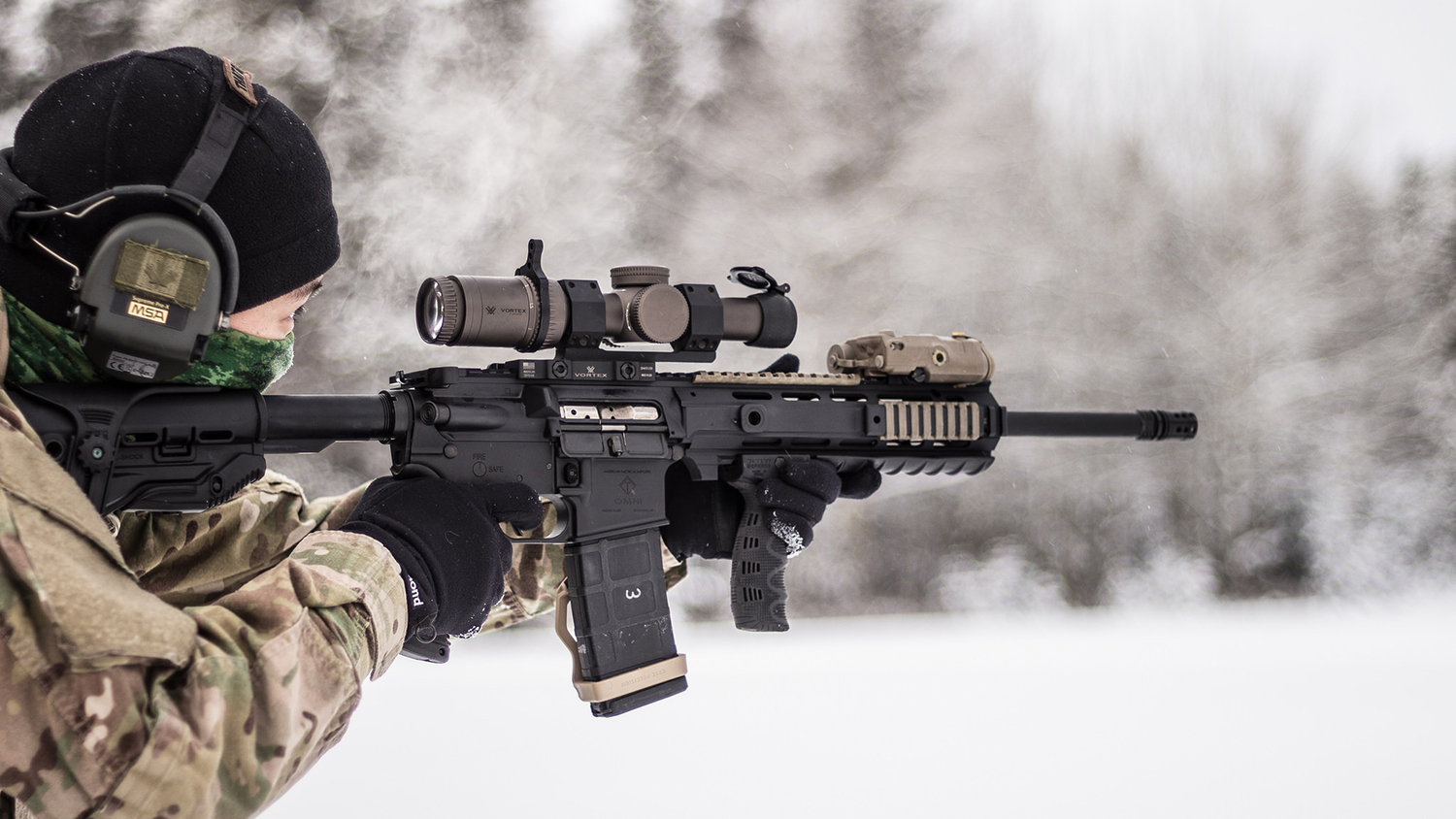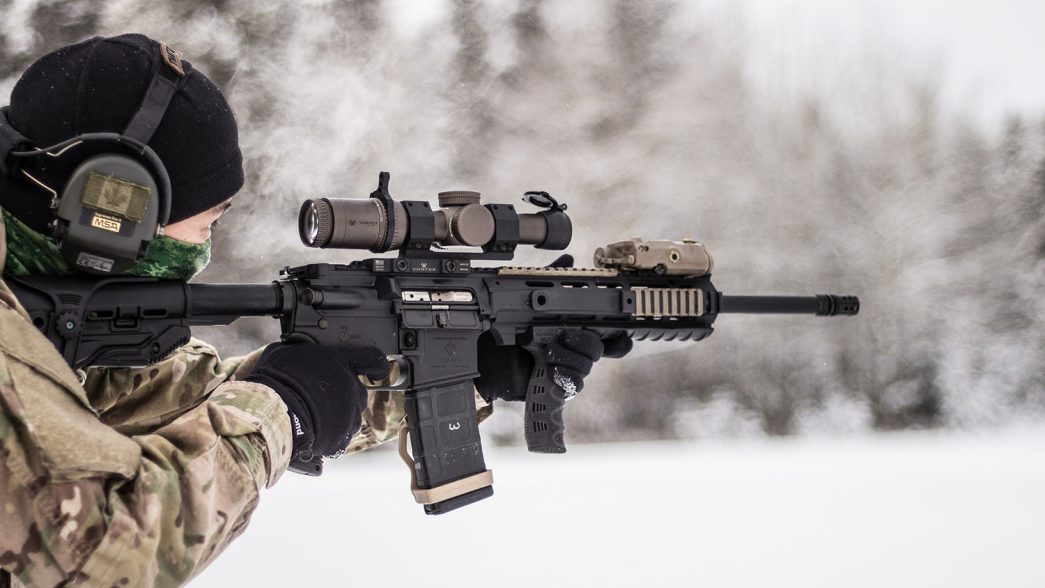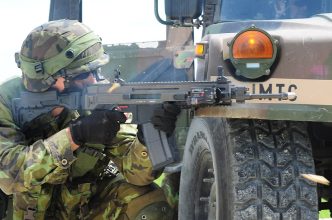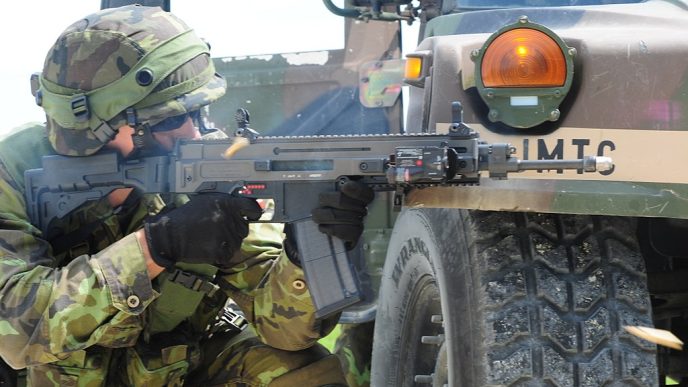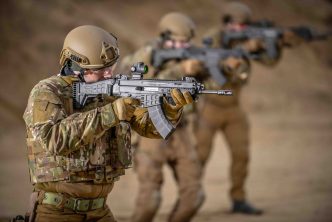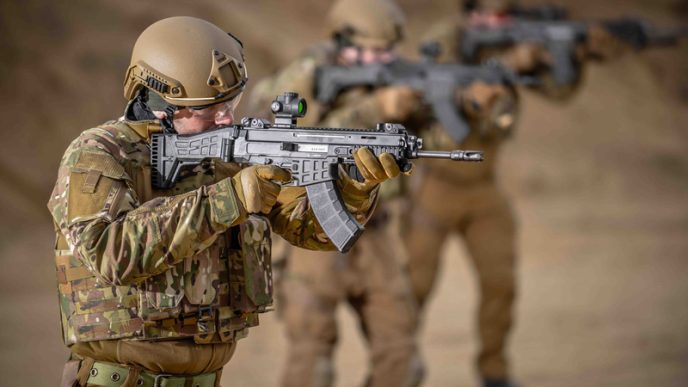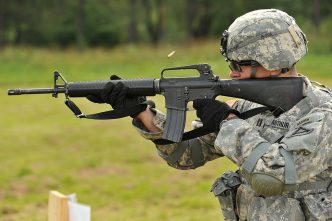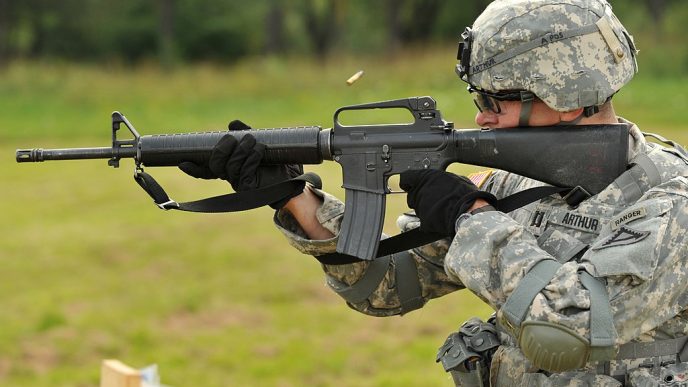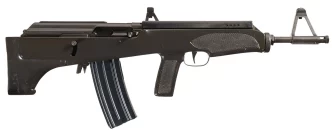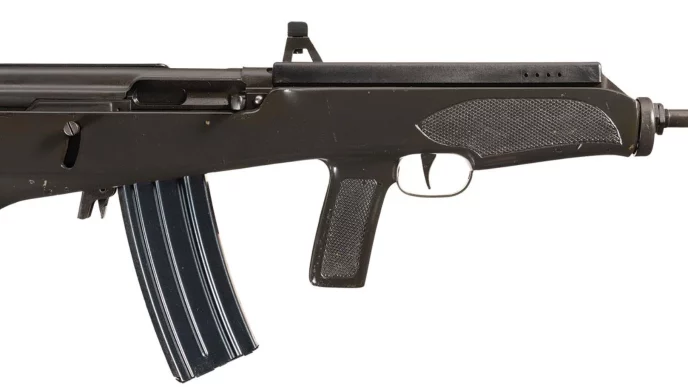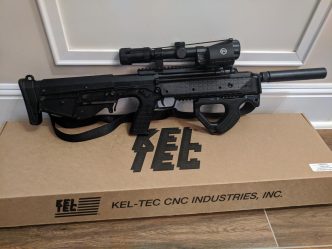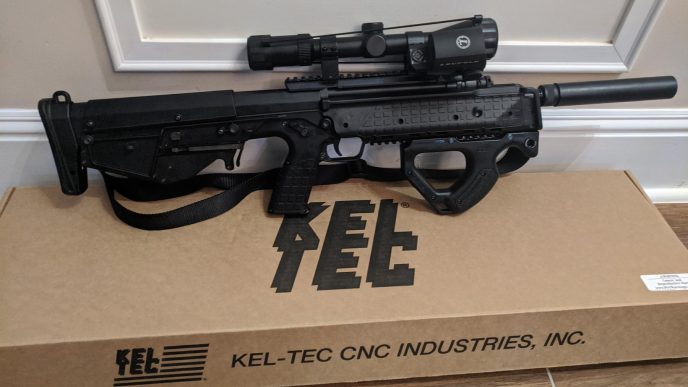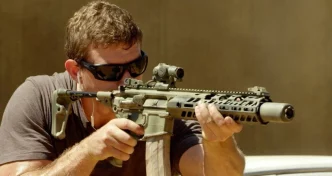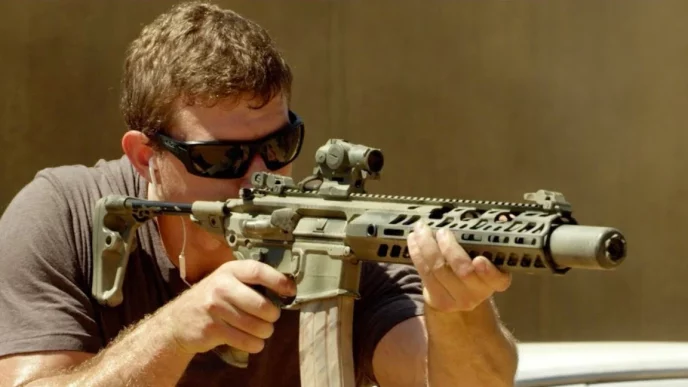The Colt Canada C8 carbine is a part of the C7 family of carbines. Its introduction to the public was in 1983, and it was designed as a licensed and modified version of the US Colt Model 723 M16A2 carbine. Colt carried out the initial production of the C8 carbine for the Canadian Forces, known as the Colt Model 725.
Introduction
The Canadian Government received a technical data package from Colt for the C8 carbine. However, Canadian Diemaco conducted a thorough review of the design, making numerous modifications to the weapon before it went into production. These modifications incorporated improvements to materials and manufacturing processes, similar to those applied to the C7 assault rifle.
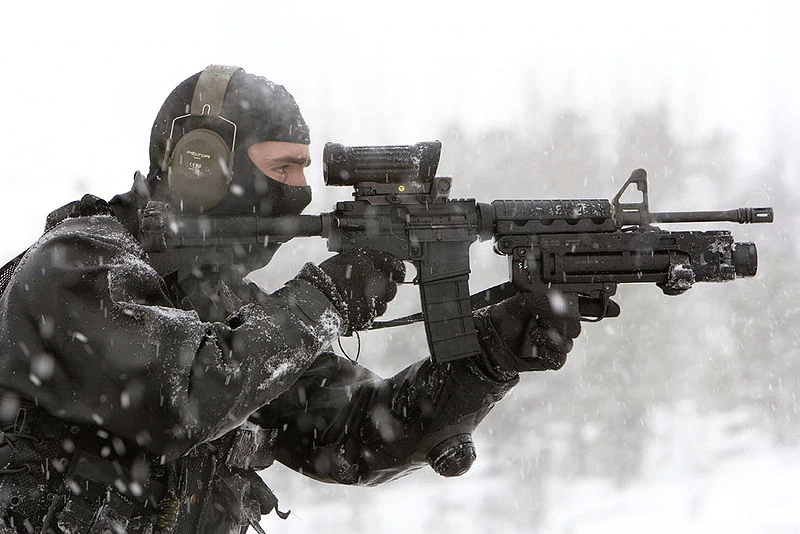
The C8 can be viewed as a more compact alternative to the C7, intended for troops who don’t require a full-size assault rifle, such as vehicle drivers, artillery crews, airborne soldiers, and special operations units. The C8 carbine was officially adopted in 1994 and is currently used by the Canadian Armed Forces. This weapon has been exported to the United Kingdom, where special forces and military police utilize it. In 2005, Diemaco was acquired by Colt Defense and rebranded as the Colt Canada Corporation.
Design
The C8 is a state-of-the-art, selective fire weapon that operates on gas. This carbine is designed to use standard NATO 5.56x45mm ammunition and has been extensively tested to ensure reliability, accuracy, and ease of use. The C8 boasts an ergonomic design, making it comfortable to handle during extended firing periods.
In terms of its technical specifications, the C8 is equipped with a 368mm (14.5in) A1 profile barrel, similar to the Colt Model 653 M16A1 carbine. However, it features a unique 1 in 178mm (7in) rifling twist, which provides optimal stability for the 5.56x45mm NATO C77 and C78 cartridges. This gives the C8 a significant advantage over the C7 assault rifle, which typically has a longer 508mm (20in) barrel.
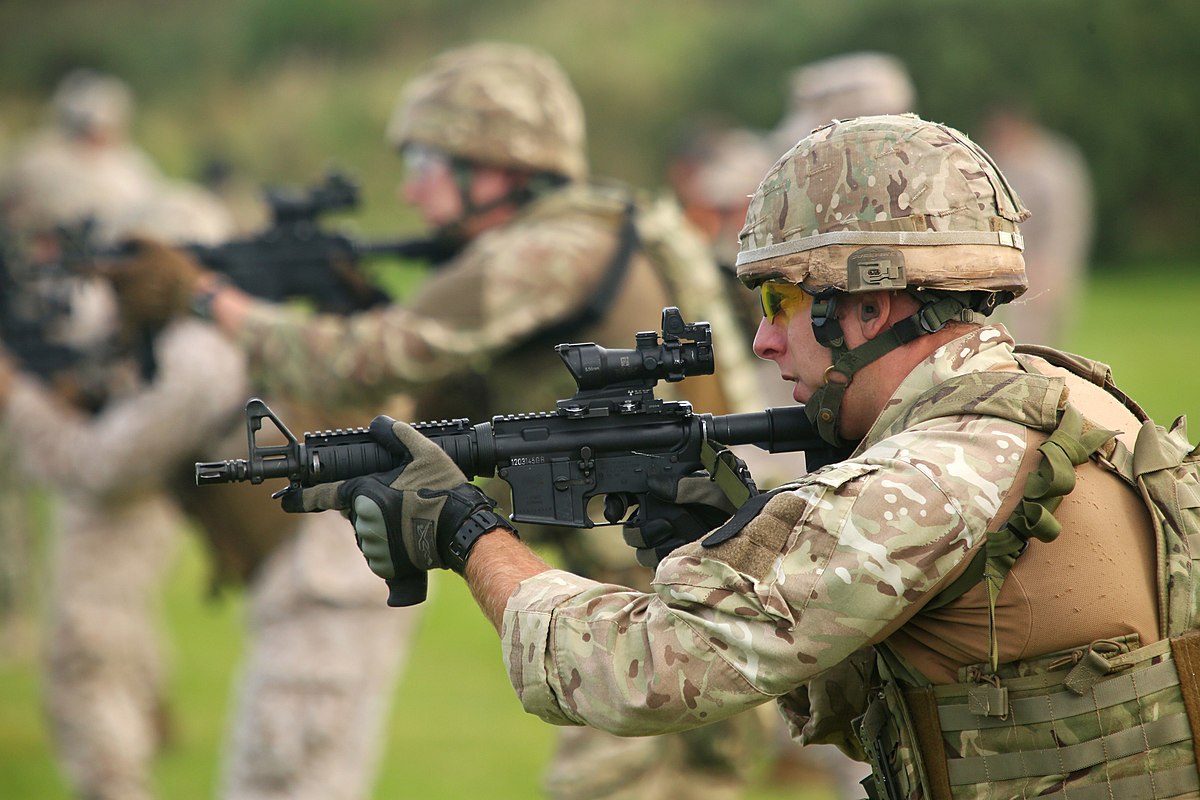
The progressive design of the C8 means that its barrel and buttstock are aligned on the same axis. This results in the recoil force being directed backward instead of upwards, reducing muzzle climb and improving accuracy. The C8’s compact size and balanced design make it easy to carry and maneuver in tight spaces, making it an excellent choice for many applications.
The C8 features a user-friendly safety/fire mode selector switch on the receiver’s left side, above the pistol grip. It offers three distinct modes – “safe,” “semi-auto,” and “full-auto” – for maximum versatility in the field. The carbine is equipped with a cocking handle located at the rear of the receiver that does not reciprocate during firing, ensuring smooth and steady operation. The ejection port is conveniently located on the right side.
This weapon is fed by 30-round capacity magazines and is compatible with C7/M16 magazines and all standard STANAG magazines. Additionally, the C8 can accept magazines from other popular assault rifles, such as the Heckler & Koch G36, Steyr AUG, Tavor, and more. With a cyclic rate of fire of around 750-950 rounds per minute (RPM), the C8 can sustain rapid fire.
The C8 is fitted with a telescopic 4-position buttstock that provides ample adjustability for a comfortable and secure grip. Unfortunately, the internal design of the weapon cannot be adapted to a folding stock. However, the store can be adjusted for length, allowing the rifle to be shortened when necessary.
The standard C8 carbine is equipped with built-in diopter-type iron sights that are integrated into the carrying handle. These sights offer a maximum sighting range of up to 600 meters, with range adjustments made by rotating a rear knob. Later models of the C8 feature a Picatinny-style rail on top of the receiver, which enables the attachment of additional sights and a detachable carrying handle.
Despite its impressive sighting capabilities, the C8’s effective range is limited to around 360 meters due to its shorter barrel. The iron sights are typically zeroed for SS109/M855/C77 ammunition, with the rear aperture sight set at 250 meters. Windage can be adjusted in 3.8 cm or 0.38 mrad increments at 100 meters, while elevation can be adjusted in 4.7 cm or 0.47 mrad increments at 100 meters. It’s important to note that once the iron sight line is zeroed, the front sight post and rear sight should not be altered.
In addition to its iron sights, the C8 can accommodate a 40-mm under-barrel grenade launcher and a bayonet for versatility in the field.
Variants
C8A1
The C8A1, also known as the Diemaco C8FT, is a modified version of the C7A1 that features a flat-top upper receiver. This carbine is a C8 with a C7A1 flat-top receiver, boasting a 368-millimeter barrel compared to the 508-millimeter barrel typically seen on the C7. The C8A1 is equipped with a scope rail and can accommodate a wide range of scopes, with the C79 3.4x magnification optical sight being the preferred choice.
A detachable carrying handle can still be installed on the C8A1, along with A1 sights developed by Diemaco specifically for the C7FT and the C8FT. However, the C8A1 was never officially adopted by the Canadian Forces and was only utilized in Afghanistan due to its compatibility with the C79 optical sight.
C8A2
The C8A2 is a refined iteration of the C8 series of weapons. Featuring similar advancements as the C7A2 assault rifle, it boasts updated components such as green-colored furnishings. The C8A2 has been exported to various foreign nations and is utilized by several law enforcement organizations.
C8 SFW
The C8 SFW (Special Forces Weapon) is a variation of the C8 carbine designed for special forces use. It has a longer and heavier 400 mm (15.7″) barrel, a more heavily gassed operating system to enhance reliability and can mount either an M203A1 or Heckler & Koch AG-C/EGLM under-barrel grenade launcher. British special forces adopted the C8 SFW as the L119A1 and Norwegian special forces and later upgraded to the L119A2 with a custom Integrated Upper Receiver.
C8 FTHB
The C8 FTHB is an improved version of the C8 carbine with a heavy barrel. It features a cold hammer-forged M4 profile barrel with a grenade launcher cutout for mounting the M203A1 and bayonet, as well as the Elcan C79 optical sight. Some earlier versions used refurbished C8 receivers with “FTHB” markings, while later versions were manufactured with new lower receivers with “C8FTHB” markings. Some C8FTHB carbines were later upgraded to the C8A3 standard, stamped “C8FTHBA3”. After 400 of these carbines were upgraded to the C8 FTHB A3 standard, Colt Canada redesignated the weapon simply as C8A3.
C8A3
The C8A3 has replaced the C8FTHB in production, offering enhanced versatility with its ambidextrous controls. The new model boasts a 400mm cold-hammer-forged barrel and a flat-top upper receiver, much like the C8FTHB. Additionally, it has incorporated several mid-life upgrades previously introduced with the C7A2, such as green furniture. This charging-handle latch can be operated from either side, a more accessible magazine release, and a selector lever be easily switched by either hand. Another improvement is the TRIAD I rail for C8, which has one less slot than the C7 TRIAD I, making it easier to mount the M203A1 sight.
C8CT
The C8CT (Custom Tactical) is a specialized version of the C8 carbine, designed for use as a designated marksman rifle. It was developed primarily for law enforcement, serving as an effective sniper spotter weapon. With a 410mm barrel and a match trigger, the C8CT offers greater accuracy than the standard C8. To support this enhanced performance, the C8CT also features a weightier stock, a small removable bipod, an accessory rail for designators under the foregrip, an outstanding pistol grip, and other modifications. This weapon is often used with a sound suppressor to reduce its signature.
C8 IUR
The C8 IUR (Integrated Upper Receiver) is a semi-automatic variant of the C8 carbine. Adopted as a standard-issue patrol carbine by the Royal Canadian Mounted Police, it has also gained widespread use in the Danish military. This version is highly valued for its reliability and versatility, making it a popular choice among law enforcement and military organizations.
MRR – Modular Rail Rifle
In 2015, Colt Canada introduced the MRR (Modular Rail Rifle), which was made available for sale in 2016. The MRR features a monolithic upper receiver equipped with Magpul’s M-LOK attachment system for accessories. This rifle has barrels measuring 11.6, 14.5, 15.7, and 18.6 inches in length. The 11.6-inch variant features a shorter handguard. As of late 2016, the 14.5-inch version is only offered to law enforcement and military organizations.
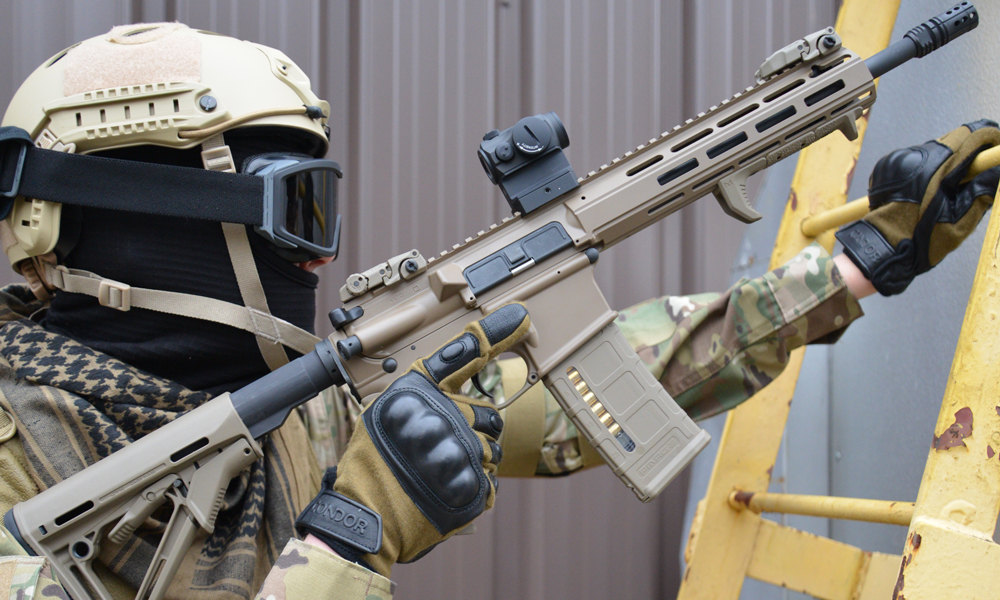
Other variants
The C8 CQB is a compact and highly maneuverable assault rifle with a 250mm or 290mm barrel. This rifle is similar in design to the US Mark 18 Mod 0 CQBR compact assault rifle. There are two additional variants of the C8 CQB, including the C8CQB, which features a 254mm or 295mm heavy barrel and a Vortex Flash Hider made by Smith Enterprise Inc. The smaller Personal Defense Weapon (PDW) variant is even more compact, measuring just 530mm in length with its stock fully retracted, and is equipped with a 145mm barrel. The receiver extension of this PDW variant has been shortened by 42mm.
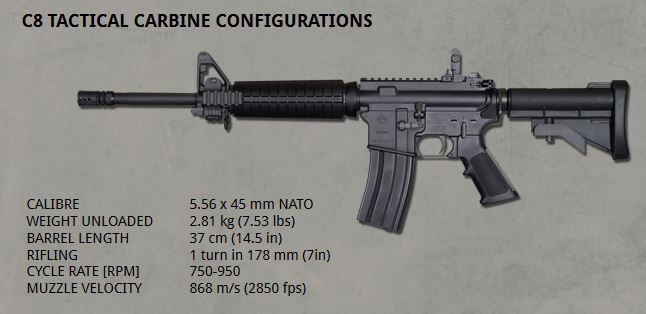
Technical specifications
| Country of origin: | Canada |
| Manufacturer: | Colt Canada |
| Entered service: | 1994 |
| Caliber: | 5.56×45 mm NATO |
| Weight (unloaded): | ~ 2.5 kg |
| Length: | ~ 840 mm |
| Length (with folded stock): | ~ 760 mm |
| Barrel length: | 368 mm |
| Muzzle velocity: | 840 m/s |
| Cyclic rate of fire: | 700 – 950 rpm |
| Practical rate of fire: | 40 – 100 rpm |
| Magazine capacity: | 30 rounds |
| Sighting range: | 600 m |
| Range of effective fire: | ~ 360 m |
